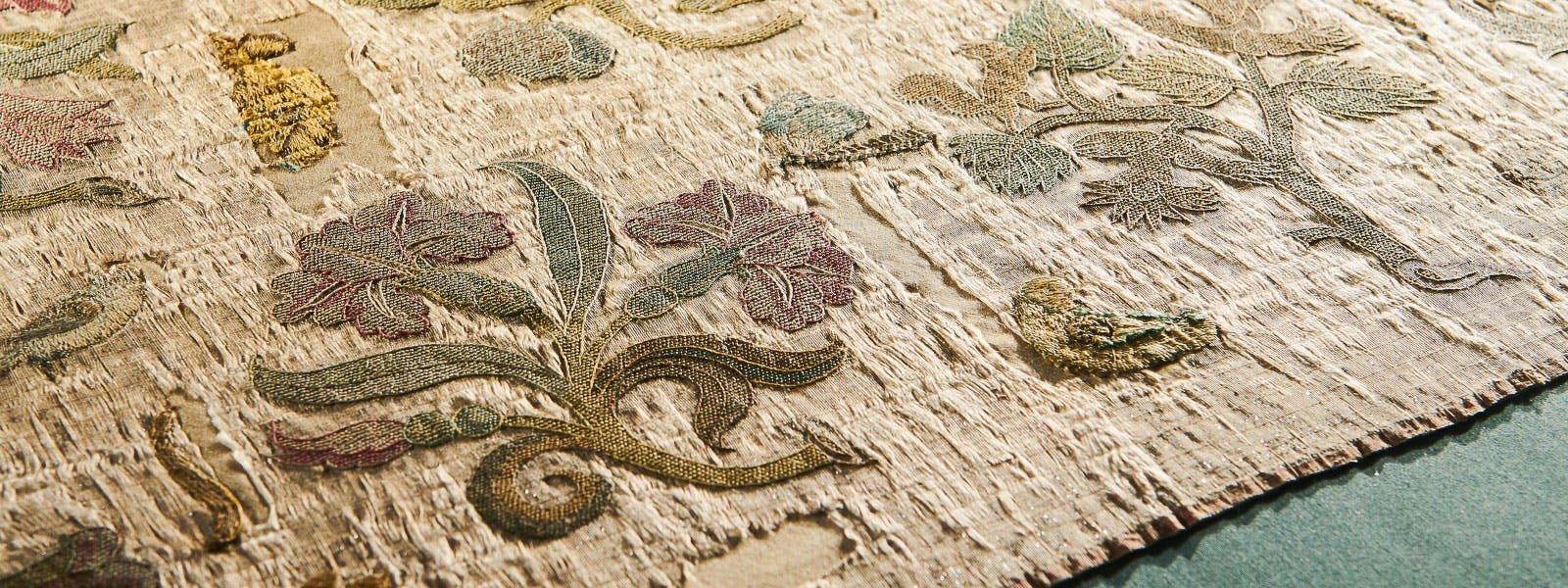
The Bacton Altar Cloth, a rare survival of Elizabeth I's wardrobe, on display at her former home
Skip the event ticket details and go to event summary.
When
12 October 2019 - 23 February 2020Exhibition information
This exhibition is closed.
The Bacton Altar Cloth at Hampton Court Palace
The Lost Dress of Elizabeth I was an exhibition that displayed the Bacton Altar Cloth, a rare survival of Elizabethan dress worn by Elizabeth I, and the iconic Rainbow Portrait at Hampton Court Palace.
The only surviving example of Elizabeth I's dresses
Following new research and conservation, Historic Royal Palaces Curators believe that the Bacton Altar Cloth once formed part of a dress worn by Elizabeth herself.
The high-status silver chamblet silk, professional embroidery including gold and silver thread, and distinct evidence of pattern cutting all suggest that the item was once an item of elite court dress. Tudor law meant that only the very highest levels of nobility and royalty were allowed to wear dress that contained gold and silver.
New research supports the theory that this was intended for the highest level of customer and that it is an item of dress from Elizabeth's own wardrobe, making it the only known surviving example of Elizabeth I's clothing.
It seems likely that the embroidered silk cloth found its way to the small village of Bacton by association with Blanche Parry, Elizabeth's most faithful servant and almost life-long companion. It is likely that it was sent to Bacton by the Queen or her ladies-in-waiting in memory of Blanche.
It was then kept safe as an altar cloth for centuries, before being identified as a rare piece of 16th-century clothing.
Video: identifying the Bacton Altar Cloth
This content is hosted on YouTube
This content may be using cookies and other technologies for which we need your consent before loading. To view the content, you need to enable cookies for "Targeting Cookies & Other Technologies".
Manage CookiesDiscover more about how the Bacton Altar Cloth was identified as a piece of Elizabeth's clothing.
Hear more about how the Bacton Altar Cloth was identified as a piece of Elizabeth's clothing from Eleri Lynn, Collections Curator at Historic Royal Palaces; Ruth E. Richardson, historian and author of the life of Blanche Parry; and Charles Hunter, former warden at Bacton Church, in this short film.
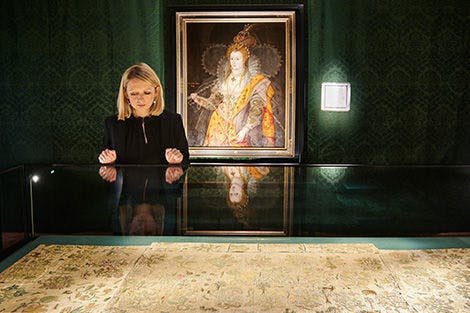
"To have an item of Tudor dress with such a close link to Queen Elizabeth I is extraordinarily rare, and we are very excited to display the Bacton Altar Cloth next to the legendary Rainbow Portrait, with its prominent similarities to the fabric of the cloth itself."
Eleri Lynn, Collections Curator
The Rainbow Portrait
Iconic portrait on display at Hampton Court Palace
Displayed alongside the Bacton Altar Cloth was the iconic Rainbow Portrait, on loan from Hatfield House, which depicts Elizabeth I wearing a gown that bears a striking resemblance to the cloth.
The portrait — attributed to Marcus Gheeraerts the Younger — was commissioned by Robert Cecil and is filled with symbolism including motifs of eyes and ears.
Accompanying the painting was a selection of rare domestic print books dating from the Tudor period, which would have provided inspiration for many of the embroidered motifs fashionable during Elizabeth’s reign – including those found on the Bacton Altar Cloth – brought together for the first time with other stunning embroidery work from the period.
Unpacking the Virgin Queen’s now iconic style, the exhibition will explore the artistry and majesty of the Tudor wardrobe, Elizabeth's inner-circle of women, how embroidery served as a way of female bonding at court, along with the fascinating world of secret symbols and Elizabethan codes.
Image: Rainbow Portrait of Elizabeth I © Marquess of Salisbury/Hatfield House
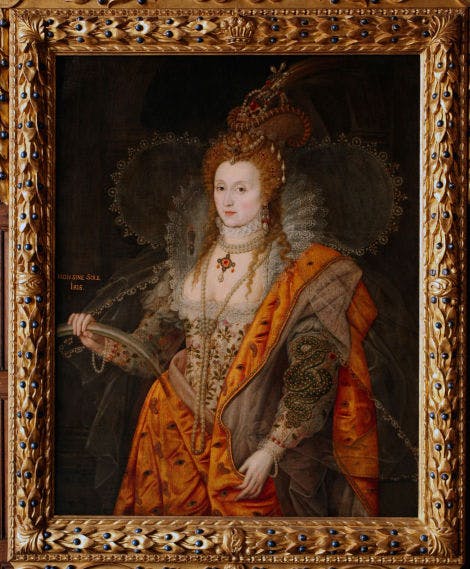
The history of the Bacton Altar Cloth
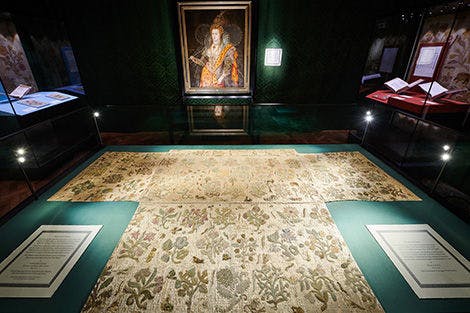
The Bacton Altar Cloth has long been associated with Blanche Parry, Elizabeth I's Chief Gentlewoman of the Bedchamber and one of her most trusted servants. Blanche watched the infant Elizabeth’s cradle, helped nurse her through small-pox, and advised her. She acted as a gate-keeper to Elizabeth too.
It was not unusual for Elizabeth to pass on her discarded clothes to her confidantes, with records showing that Parry received many gifts of clothing from the Queen.
Experts identified the richly embroidered cloth as a piece of 16th-century dress in 2016.
Upon its identification, the cloth was loaned to Historic Royal Palaces, the independent charity that cares for Hampton Court Palace. It required urgent conservation and Conservators have spent three years undertaking a full conservation treatment of the object at the Hampton Court textile conservation studio and preparing it for display, ensuring its survival for future generations.
Recreating Elizabethan embroidery
Our partnership with the Royal School of Needlework
As part of The Lost Dress of Elizabeth I exhibition, Historic Royal Palaces teamed up with the Royal School of Needlework (RSN) to recreate some of the motifs from the Bacton Altar Cloth. This experimental project highlighted the skill and processes of the original Elizabethan embroiderer.
Learn more about this experimental project
Our supporters
Conservation of the Bacton Altar Cloth was supported by:
The Leche Trust
Lord Barnby's Foundation
The Worshipful Company of Gold and Silver Wyre Drawers
The Worshipful Company of Tin Plate Workers alias Wire Workers
Explore what's on

- Families
- Half term
- Things to see
February Half Term
Join a royal quest this half term with Elizabeth I at Hampton Court Palace.
-
14 – 22 February 2026
- 10:00-16:00
- Hampton Court Palace
- Included in palace admission (Members go free)

- Things to see
Cumberland Art Gallery
Discover masterpieces by Rembrandt, Caravaggio, van Dyck, and more at the Cumberland Art Gallery at Hampton Court Palace.
-
Open
- In line with palace opening hours
- Hampton Court Palace
- Included in palace admission (Members go free)

- Things to see
Hampton Court Gardens
Take time to explore and relax in these world-renowned gardens and find our free entry Garden Open Days dates.
- Open
- In line with palace opening hours
- Hampton Court Palace
- Included in palace admission (Members go free)
Browse more history and stories
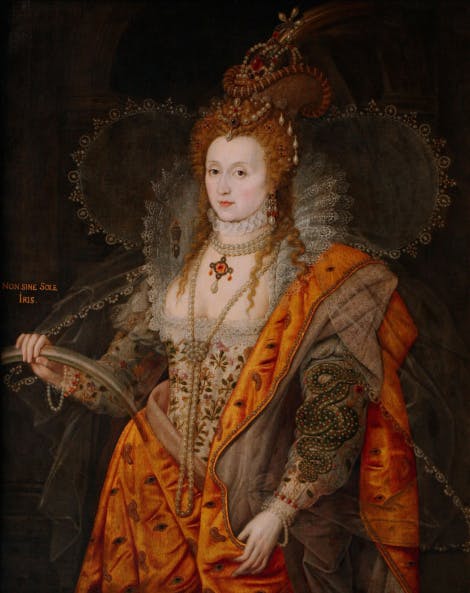
Elizabeth I, the Last Tudor
From Tower prisoner to English Queen

Henry VIII's children
All three ruled England
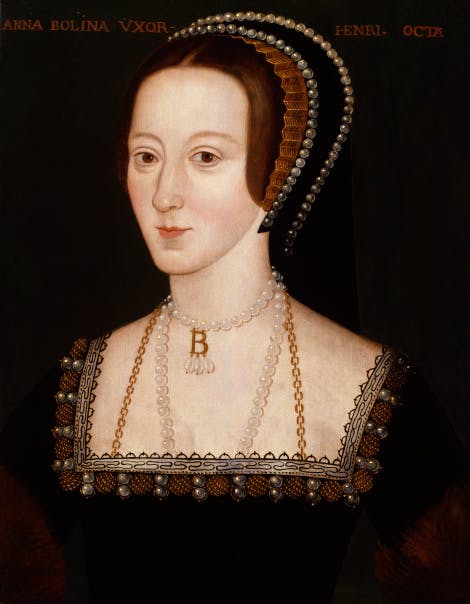
Anne Boleyn
How did Anne Boleyn become queen and why did Henry VIII execute her?
Shop online

Shop Hampton Court Palace
Explore our gifts and souvenirs, inspired by over 500 years of history from Hampton Court Palace.
From £2.50
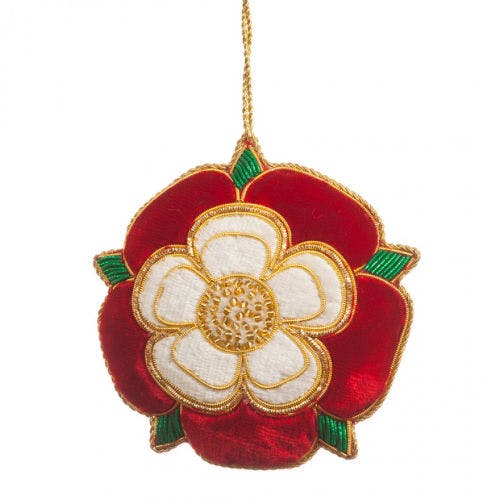
Tudor Rose Decoration
Handmade using metal and silk threads, this exquisite Tudor rose decoration commemorates the joining of two royal families, York and Lancaster.
£15.00

Shop Kings & Queens of England
Discover our informative and best selling range, inspired by the incredible history of the Kings and Queens of England.
From £4.99
